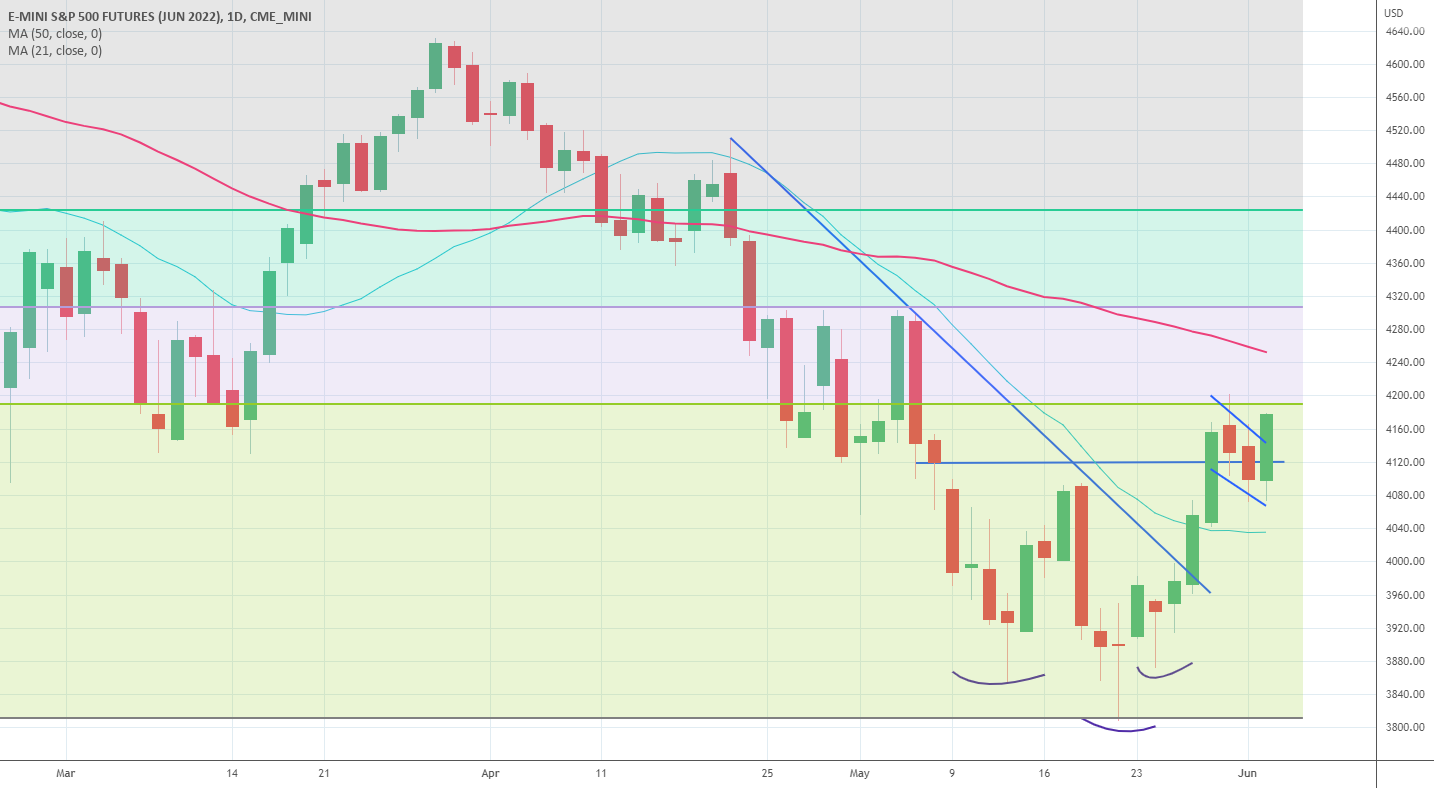Introduction
In recent months, we have witnessed a significant surge in stock markets across the United States, driven by robust economic indicators that suggest the US economy is more resilient than previously anticipated. Amidst global uncertainty and the aftershocks of the COVID-19 pandemic, the US economy has continued to defy odds, providing a strong foundation for investor confidence.
This post provides a comprehensive market overview of the stock surge, analyzing key factors driving this rally and what it means for the future of the financial markets.
From tech giants to small-cap stocks, every sector seems to have benefited from the current economic landscape. This market overview will delve into the nuances behind the surge, explore the role of macroeconomic data, assess sectoral performances, and consider what this means for investors in the near term. Whether you’re a seasoned investor or just starting out, understanding the key drivers of the market surge is essential for making informed investment decisions.
Let’s dive into the details to uncover why stocks surge as the US economy shows resilience, and what it means for the broader market.

The Role of Economic Indicators in the Stock Market Surge
To understand why stocks surge in response to economic data, it’s crucial to first look at the key indicators that signal the health of the US economy. For instance, GDP growth, employment rates, consumer spending, and inflation are all important metrics that influence market sentiment. Over the past several months, many of these indicators have shown remarkable improvement, suggesting that the US economy is on a stable recovery path.
GDP Growth and Its Impact on the Market
The gross domestic product (GDP) is often viewed as the most comprehensive measure of economic activity. As the US economy has rebounded from the pandemic-induced recession, GDP growth rates have exceeded expectations in several quarters.
A surge in consumer demand, coupled with fiscal stimulus measures and improving supply chain conditions, has been a major driver of this growth. When the GDP figures are released and show positive momentum, markets tend to react favorably, which can lead to a stocks surge.
For instance, in the first quarter of this year, the US economy grew by a strong 5%, significantly outperforming many forecasts. This growth, fueled by rising consumer demand and government stimulus programs, has been a key factor in boosting investor confidence, particularly in sectors like consumer discretionary and industrials. As a result, these sectors have seen impressive gains in their stock prices, contributing to the broader market rally.
Employment Data: A Key Indicator for Market Confidence
The US labor market has also played a crucial role in the recent stock surge. Historically low unemployment rates, coupled with job creation in key sectors, have bolstered consumer confidence, which in turn drives higher spending. Recent job reports show that the US economy continues to add jobs at a steady pace, signaling that businesses are optimistic about future growth.
For instance, the June employment report revealed the addition of over 300,000 jobs, far surpassing analysts’ expectations. This increase in employment has not only alleviated concerns about a potential economic slowdown but also reinforced the idea that the economy is resilient enough to weather ongoing global challenges. This, in turn, has spurred a surge in stock prices, as investors grow more confident in the long-term sustainability of economic growth.
The stock surge can also be linked to the broader macroeconomic trends in the US economy, where a tight labor market often translates into rising wages. Higher wages increase disposable income, leading to increased consumer spending, which directly benefits companies’ revenues. When company earnings improve, stock prices often follow, contributing to the broader market surge.
Sectoral Analysis: Which Industries Are Leading the Surge?
As we continue to explore the reasons behind the stock surge, it’s important to examine how different sectors within the US economy have fared. While the stock market rally has been broad-based, certain industries have outperformed others due to sector-specific drivers. Let’s take a closer look at some of the sectors leading the charge.
Technology: The Unstoppable Force
One of the primary drivers of the stocks surge has been the continued strength of the technology sector. Despite concerns over potential regulatory crackdowns and supply chain disruptions, tech giants such as Apple, Microsoft, and Amazon have seen their stock prices soar. The reason for this is simple: technology continues to be a cornerstone of modern life, and demand for tech products and services has remained robust.
The tech sector’s resilience can also be attributed to the ongoing digital transformation that has been accelerated by the pandemic. As businesses and consumers alike continue to adopt digital solutions at a rapid pace, companies that provide cloud services, artificial intelligence, and cybersecurity solutions have enjoyed record profits. This has led to a surge in stock prices for tech companies, pushing the broader market higher.
Energy: A Rebound in Oil and Gas
While technology has been a consistent performer, the energy sector has seen a remarkable turnaround. After a challenging period during the early stages of the pandemic, oil prices have rebounded strongly, thanks to recovering global demand and supply constraints from OPEC+ production cuts. As oil prices surged, energy companies reported higher-than-expected earnings, leading to a significant rally in their stock prices.
The US economy’s resilience, coupled with increased travel and industrial activity, has driven up demand for energy, contributing to the sector’s performance. Investors who were previously cautious about the prospects of oil and gas companies have since returned to the market, boosting the energy sector’s stocks surge.
Consumer Discretionary: Benefiting from Increased Spending
Another sector that has seen significant gains is consumer discretionary, which includes companies that rely heavily on consumer spending. As the US economy has shown resilience, consumer confidence has surged, leading to higher spending on non-essential goods and services. Companies like Tesla, Nike, and Home Depot have seen their stock prices climb, benefiting from this uptick in consumer demand.
A combination of factors has driven this surge, including the reopening of the economy, the easing of supply chain constraints, and pent-up consumer demand following months of lockdowns. The consumer discretionary sector is often considered a barometer of economic health, and its strong performance is yet another sign that the US economy is on solid footing.
Global Factors: How International Events Are Impacting the US Market
While domestic economic indicators have played a significant role in the stocks surge, it’s important to recognize that the US economy does not operate in isolation. Global events, such as geopolitical tensions, trade relations, and monetary policy decisions by other central banks, can also have a profound impact on US markets. Let’s examine some of the key global factors that have influenced the recent market rally.
Geopolitical Tensions and Safe-Haven Demand
One of the factors driving the stock surge has been the increase in demand for US equities as a safe-haven investment. In times of geopolitical uncertainty, such as tensions between major global powers or conflicts in key regions, investors tend to flock to safer assets. The US stock market, with its deep liquidity and strong regulatory framework, is often seen as a safe place to park capital during turbulent times.
Recent geopolitical developments, including rising tensions between China and the US and concerns about stability in Eastern Europe, have led to increased demand for US stocks. This influx of capital has contributed to the stock surge, as investors seek stability amidst global uncertainty.
Monetary Policy and Global Interest Rates
Another key global factor influencing the US market has been the actions of central banks around the world. In particular, the US Federal Reserve’s monetary policy has had a significant impact on the stock surge. As the Fed has maintained a relatively dovish stance, keeping interest rates low to support economic growth, other central banks have followed suit, creating a low-interest-rate environment globally.
Low interest rates make borrowing cheaper for companies, which can lead to increased investment and expansion. This, in turn, drives higher corporate earnings, which is a major factor in stock price appreciation. Moreover, low interest rates also encourage investors to seek higher returns in equities, as bonds and other fixed-income investments offer relatively lower yields. This has led to increased demand for US stocks, contributing to the ongoing surge.
Trade Relations and Supply Chain Challenges
Lastly, trade relations and global supply chain challenges have had a mixed impact on the US market. While ongoing trade disputes with countries like China have created uncertainty, the US economy’s resilience in managing these challenges has impressed investors. For example, despite tariffs and trade barriers, many US companies have found alternative suppliers and adapted to the new trade landscape, ensuring that their operations continue to run smoothly.
This adaptability has reassured investors that US companies are capable of weathering global trade disruptions, leading to continued confidence in the stock market. Additionally, the easing of supply chain bottlenecks, particularly in sectors like manufacturing and retail, has allowed companies to meet growing demand, further supporting the stocks surge.
Investor Sentiment and Market Outlook
Investor sentiment plays a crucial role in determining the direction of the stock market. Over the past year, there has been a noticeable shift in sentiment as the US economy has shown resilience and outperformed expectations. As a result, investors have grown more optimistic about the future, driving stock prices higher.
Bullish Sentiment Amid Economic Resilience
The surge in stocks can largely be attributed to the optimistic outlook held by many investors. Despite some concerns over inflation and potential monetary tightening by the Federal Reserve, many investors believe that the US economy is well-positioned to continue growing. This bullish sentiment has been reflected in stock prices, with major indices like the S&P 500 and Nasdaq hitting all-time highs.
The belief that the US economy will continue to show resilience, even in the face of global challenges, has led investors to pour capital into the stock market. This influx of capital has not only pushed stock prices higher but has also contributed to increased market liquidity, further supporting the stock surge.
The Role of Institutional Investors
Institutional investors, such as hedge funds, pension funds, and mutual funds, have also played a significant role in the stock surge. As these large investors have shifted their portfolios to include more equities, they have driven up demand for stocks. This has been particularly true for sectors that have shown strong growth potential, such as technology and healthcare.
Moreover, institutional investors tend to have a longer-term outlook, which can provide stability to the market during periods of volatility. Their confidence in the US economy’s resilience has helped to sustain the stock surge, even in the face of short-term market corrections or global uncertainties.
Conclusion
The stock surge we have seen in recent months is a testament to the resilience of the US economy. Despite facing numerous challenges, including the lingering effects of the pandemic, geopolitical tensions, and global supply chain disruptions, the US economy has continued to show strength. This resilience has inspired investor confidence, leading to a significant rally in stock prices across various sectors.
From strong GDP growth and improving employment numbers to the impressive performance of key sectors like technology, energy, and consumer discretionary, the factors driving the stocks surge are diverse and interconnected. Global events and central bank policies have also played a role, further highlighting the complexity of the market landscape.
As we look ahead, it remains to be seen whether the stock surge will continue at its current pace. However, one thing is clear: the US economy has proven itself to be remarkably resilient, and investors are taking notice. Whether you’re a seasoned market participant or just getting started, staying informed about these trends will be essential for navigating the ever-evolving market environment.
What are your thoughts on the current stock surge? Do you think the US economy can sustain its momentum? We’d love to hear from you! Feel free to leave a comment below and share your perspective on the market overview.






